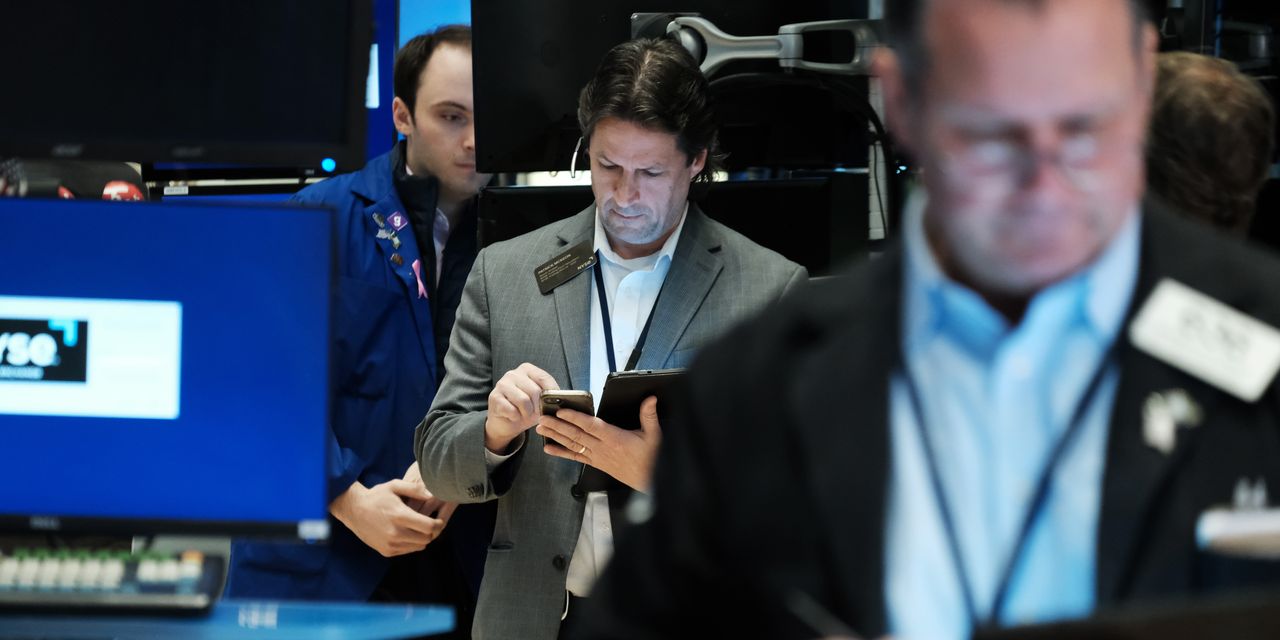Volatility might be the most attractively priced asset in the global markets.
The
Cboe Volatility Index,
or VIX, is around 18, which broadly suggests that options prices lack significant fear or greed premiums—even though global and domestic affairs are unusually chaotic and hard to forecast.
The latest risk, of course, is that the U.S. government might default on its debt because Republicans and Democrats have seemingly forgotten that politics is the art of compromise. If America runs out of money to pay its bills, the global economy would enter unknown territory because the most trusted government in the world would no longer be trustworthy.
On most days, the stock market acts like a whirling dervish, only to close near where it opened. But recent intraday swings have become so intense that investors should consider what happens if the market suddenly becomes zealously dour or optimistic.
It is hard to be definitive about stocks’ direction when the drivers of market volatility are exogenous risks such as inflation, the specter of a recession, the pace of Federal Reserve rate hikes, and the debt-ceiling crisis. Rather than debating if the VIX is broken—a popular market topic—it is better to consider strategies that could benefit from changes in options volatility that would accompany sharp moves in the stock market.
With the
SPDR S&P 500
exchange-traded fund (ticker: SPY) at $410.25, aggressive investors could buy the ETF’s August $400 put option and buy the August $430 call option to express a view that the stock market will escape its trading range before the summer. The trade costs about $14.22. If the ETF is at $470 at expiration, for example, the $430 call is worth $40. Should it be at $350 at expiration, the put is worth $60.
The August expiration was chosen to provide a margin of safety that offers plenty of time for Washington to come up with a deal, or not. The June 1 deadline that has been identified as the day the government runs out of money could be temporarily extended, for instance, as part of the negotiations’ dramatics.
The strangle strategy—that is, buying a bullish call and a bearish put with different strike prices but similar expirations—is suitable for investors who can afford to lose money without adversely impacting their daily lives.
The risk to the strangle strategy is that the money spent to buy a put and call will be lost if the SPDR S&P 500 ETF fails to fall significantly below $400 or rise above $430 by the August expiration. Some residual value will remain, of course, and the positions could be rolled, or adjusted, to more distant expiration dates. But managing failed positions to keep them alive could wind up costing even more money.
The strategy represents a sharp divergence from our standard stance that investors use options to get paid to be long-term investors. We favor using cash-secured puts and covered calls to get paid by the options market for agreeing to sell or buy stocks at lower and higher prices. We have recently written that investors could use those strategies when blue-chip stocks that they own, or want to buy, are definitively lower or higher.
The strangle strategy connects to a central fact of this chapter in the market: relatively low volatility and a stock market that seems to be waiting to be freed from a trading range. McMillan Analysis, an options strategy firm, recently advised clients that the
S&P 500’s
trading range has been stuck between 3800 and 4200. The index was recently around 4100.
Steven M. Sears is the president and chief operating officer of Options Solutions, a specialized asset-management firm. Neither he nor the firm has a position in the options or underlying securities mentioned in this column.
Email: [email protected]
Read the full article here


